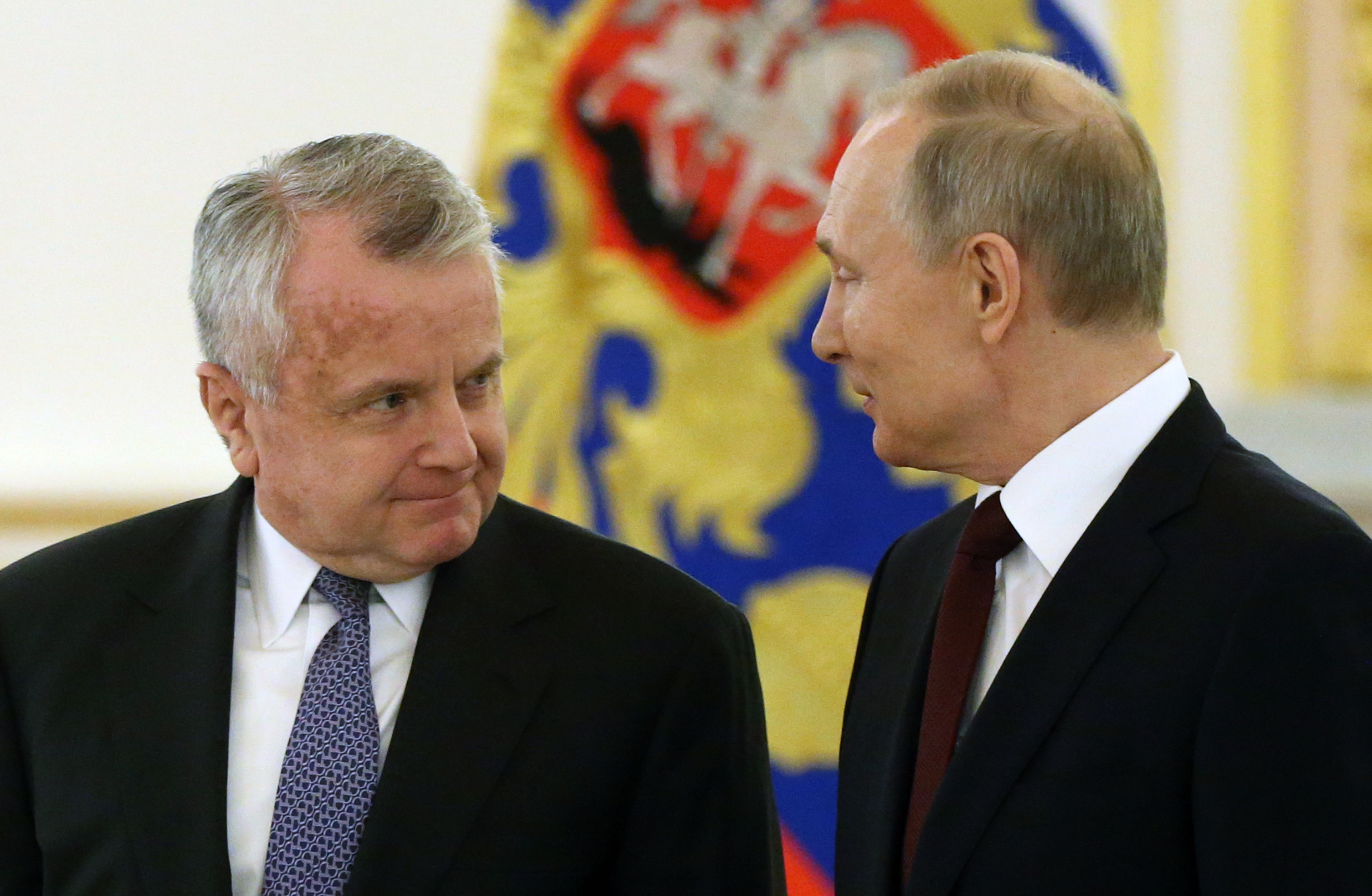World
US overestimated Putin’s “red lines”: ex-ambassador to Moscow

The U.S delayed too much in its decisions about giving Ukraine weapons because the risk that such a move would breach Vladimir Putin‘s so called “red lines” was overstated, Washington’s former ambassador to Russia has told Newsweek.
John J. Sullivan, who was Washington’s envoy to Moscow from 2020 to 2022 under former President Donald Trump and current President Joe Biden, has published a book, Midnight in Moscow, released this month, which outlines the frantic diplomacy before and after Putin’s full-scale invasion in February 2022.
The U.S. is Kyiv’s biggest supplier of military aid, which so far totals $56 billion but these donations were tempered with constant fears over escalation over how Putin might respond, especially given his threatening nuclear rhetoric.
Mikhail Svetlov/Getty Images
“It was a failure on the part of the United States to supply what the Ukrainians needed beyond their heroic resistance,” Sullivan told Newsweek. “Whether it’s M1A1 tanks, F-16s, missiles, it’s just been delay, delay, delay.”
This month’s long-awaited delivery of F-16s after Biden greenlit allies to send the U.S. aircraft is the latest provision of U.S. equipment, which has graduated from Javelin and Stinger missiles to HIMARS (High Mobility Artillery Rocket System), longer-range ATACMS missiles and even Patriot missile systems.
So far, none of these weapons has prompted a stern response from Russia, nor has Ukraine’s incursion into the Russian region of Kursk last week, which Putin might also have considered a “red line.”
Russian commentators and officials have often threatened that Western weapons for Kyiv breaches red line that could force Putin to escalate. But Sullivan said the declawing of Russia’s Black Sea Fleet gave an insight into Putin’s mindset.
“What we’ve seen over time is focused on what the U.S. has done. Look at what the Russians have done—or not done,” he said.
“The idea that the Ukrainians, with the use of weapon systems from the West, would be able to drive the Russian Navy from Crimea without a catastrophic response by the Russians, comes close to proving that we overestimated where the point was at which Putin would do something that was catastrophic.”
“I always thought it would be unlikely in the extreme that he would use nuclear weapons,” he said. There may have been reluctance about supplying equipment due to concerns over whether it was suitable for the battlefield, such as the questions surrounding the Abrams tanks’ size and fuel requirements.
But he said “concern about a red line from Putin,” should not be a factor in the decision making because Putin already believes he is at war with the United States and that “we are an enemy of the Russian Federation.”
“Not a competitor, not an adversary, not that nice diplomatic speak that we use at the Department of State—we are an enemy and he treats us as such,” said Sullivan. However, “he does not want a nuclear war with the United States—no one in their right mind would and he is not insane.”

SERGEI SUPINSKY/Getty Images
“It’s easy for me to say ‘the Russians won’t use a nuke’ but if I’m the person who actually has to set the policy,” he said, referring to the U.S. president, “that’s a pretty significant risk, even if fleetingly low because the consequences would be so severe.”
“It needs to be considered. I think the balance that was struck over time overstated the risk,” he said. “The Ukrainians needed more sooner, they didn’t get it.”
Ukraine Policy Under Trump
Sullivan also said that another Donald Trump presidency may not be a boon for Vladimir Putin and his full-scale invasion of Ukraine compared with a Democratic administration.
Russian state media has portrayed Trump as the Kremlin’s preferred choice especially given the scrutiny of the Republican contender’s relationship with Putin when he was last in the White House, his criticism of continuing aid for Kyiv and pledge that he could end the war within a day which suggests he would push for negotiations.
While Sullivan said that people are “rightfully” worried about what a Trump return to the White House might mean for Ukraine’s fight, he noted those close to the ex-president, like former Secretary of State Mike Pompeo who may potentially return to his post, has laid out a plan to push back hard on Russian aggression.
Sullivan believed that much like fears about Putin’s red lines, “the risk is real” regarding a Trump presidency but “overstated.”
Under Trump, “there’s a greater risk that U.S. support could diminish in a way that has a very bad outcome on the battlefield,” he said. “I don’t think that’s going to happen, but there is a greater risk of it.”
However he said, “there might also be a greater appetite in a Trump administration to push much harder on the Russians than the Biden administration had been.”
Sullivan’s book outlines Russian intelligence failures in the lead-up to Putin’s full-scale invasion and the mistakes made in the first year in which Russian troops were pushed back from Kyiv. He said Russia’s military and main intelligence agency “have learned hard lessons, but they’re constrained both by their system and the competition between the FSB and the Ministry of Defense.”
Subtitled “memoir from the front lines of Russia’s war against the West,” Sullivan’s book notes how Washington’s relations with Moscow have hit a historic low. “Even In the Cold War, we had nuclear arms control discussions,” he said. “U.S.-Russia relations are as bad as they’ve been in my lifetime, which includes the Cuban missile crisis.”










